The current and future logistical requirements of the Armed Forces explored15th July 2020 at 4:20pm
How the Ministry of Defence (MOD) should prioritise funding often provokes heated debates within the military community but here, in an opinion piece by a Lima Charlie correspondent, one contributor puts forward a more novel approach to capability enhancement should the need for a large scale deployment of land equipment ever arise.
While new equipment programmes such as the Warrior Capability Sustainment Programme (WCSP), Challenger 2 Life Extension Programme (LEP) and Mechanised Infantry Vehicle (MIV) steal headlines and provoke arguments as to how best the MoD should prioritise funding, a reality that is rarely included in these debates is that the MoD simply has little money for major capital programmes in the near term.
Amid reports of multi-billion pound gaps in funding to cover core commitments like pensions and salaries, the notion of the Army suddenly receiving a desperately needed £4 billion to £7 billion to fully fund a coherent land equipment procurement plan for the immediate future is overwhelmingly unlikely, more so in the immediate post-COVID world.
Without a realistic prospect of major progress in land equipment for the near term, the MoD might instead look to make more valuable short term but strategically significant gains via investment in comparatively low-cost strategic enablers that actually change the capability of the Army in real terms.
None of this is to say we should not be investing in the future equipment of the British Army, something desperately overdue, but an injection of some realism in what is achievable is critical.
WCSP is rumoured to be about to see contract award despite a legacy of reported technical and programmatic issues, but even then, would be years from fielding in volume.
The programme will not impact the Army’s capability in the immediate future.
Challenger 2 LEP and the artillery’s Mobile Fires Platform are further away still, and while a contract award has been placed for MIV, the Army will not see IOC in the near term either.
So, for the time being, they have the existing combat fleet – Challenger 2, Warrior, Bulldog, AS90 et al.
Without new equipment arriving in volume in the near-term, focus perhaps needs to be shined on what the UK could realistically do with what it currently has.
But to use this equipment, the UK first has to deploy it, an issue which I would argue is not being discussed as frequently as it might and there are perhaps a number of significant issues that ought to be addressed.

The Issue Of Deployability
A key element of the British Army’s future operating concept is deployability, specifically for its new Strike Brigades to be able to self-deploy 2,000 km to 3,000 km organically and operate dispersed for up to 10 days on arrival.
While the Boxer equipped formations could feasibly self-deploy this distance, in my opinion, it is not convincing that AJAX could realistically do so.
The impact on vehicle and crew of self-deploying a tracked vehicle such distances are significant, and I would argue that it is not credible that vehicles, crews or soldiers being carried would arrive in a suitable condition to conduct an operation.
As such any road-based deployment of AJAX would realistically be carried out by moving it on a truck-based equipment transporter.
It should be noted however that even for a wheeled system such as Boxer, a road march of up to 3,000 km (1,865 miles) is likely to be a challenge to ensure all the vehicles arrive ready to conduct high intensity operations for a prolonged period, planned to be at least 10 days before support would arrive.
Reliability data for Boxer has not been disclosed however the M1126 Stryker ICV, an 8×8 armoured personnel carrier in use with the US in their Stryker Brigade Combat Team (SBCT) formations, shows a Mean Miles Between System Abort (MMBSA – defined as “a failure that results in the loss or degradation of an essential function that renders the system [vehicle] unable to enter service or causes immediate removal from service”) of 1,500 miles, meaning most vehicles within a formation might suffer a fault or other technical problem before they reach the destination on a march of this length.
A number of any potential issues might be enough to prevent those vehicles ever reaching the operational area, with most just halting the affected vehicle(s) for a period for repair.
These figures reflected developmental testing results, operational testing showed an even lower MMBSA of around 1,150 miles, suggesting most vehicles could expect up to two such events in a march of almost 2,000 miles to Estonia.
It should be noted that Stryker is a significantly older design than Boxer and it can be assumed the latter possesses much higher reliability, but regardless the fact is that road marching the vehicles to the theatre is raises the potential to see substantial attrition of the force before it even reaches the area of operations.
At the least, these issues might serve to significantly delay the advance or force commanders to arrive below strength.
It could also mean battlefield operations begin with vehicles in a diminished state of repair rather than in optimal condition to commence high intensity operations for a prolonged and potentially unsupported period.
The UK notionally possesses 92 HET, which are provided by a Private Finance Initiative (PFI) deal with Fasttrax until 2024.
However, approximately 18 HET have been seconded to the US due to their own shortages in Europe and so would likely be unavailable at short notice.
The UK HET fleet are Oshkosh M1070F tractor trucks towing King GTS110/7 stepframe semi-trailers capable of carrying a 75,000 kg payload, allowing the transport of the UK’s Challenger 2 MBT, which has a weight of up to 72,000 kg, or two smaller AFV such as the Warrior, although the latter would need to be at a weight point lower than its full Theatre Entry Standard specification, which is up to 42,000 kg combat weight.
These are backed up by 77 Light Equipment Transporters (LET), obtained under Urgent Operational Requirement (UOR) for Afghanistan.
LETs are Oshkosh MK32 Medium Tactical Vehicle Replacement (MTVR) tractor trucks that were modified for the UK Close Support Tanker (CST) fleet and have now been further modified and re-purposed to pull 78 legacy I-LET trailers that have been converted to the M-LET (M – Modified) standard by Broshuis of Holland. In this configuration the vehicles operate as a Special Type General Order (STGO) Cat 2, with a payload of up to 44,000 kg, allowing vehicles up to the size of Warrior to be carried.
LET alone are likely insufficient to deploy the Ajax and MIV elements of a single Strike Brigade however.
With HET augmentation they could, however this would use near the entirety of the UK equipment transport fleet to move the vanguard force (Strike Brigade) with any combat oriented Armoured Infantry (AI) forces, which would need to be closely behind Strike, without transport until the combined HET/LET fleet returns from the initial deployment.
Until the HET/LET formation has made the round trip and returned to the operational area with the AI force, the sole Strike Brigade will be isolated in meeting with the Russian vanguard, which would more than likely be an airborne (in name only) Vozdushno-Desantnye Voyska Rossii (VDV) formation equipped with heavy armour including BMD-4M and T-72B3 tanks.

While outside the remit of this article, remember at this juncture that the only anti-armour capability in the Strike formation is dismounted Javelin and that the largest vehicle mounted armament of any kind is AJAX’s 40 mm CTA cannon, and in the case of MIV is a remote weapon station (RWS) with a .50 calibre machine gun or a 40 mm automatic grenade launcher. The need to be able to rapidly deploy a heavier force in such circumstances is stark.
“Tactics win battles, logistics win wars.”
The situation therefore is that the UK is unlikely to able to deploy what it has, and even if these systems were all upgraded to a new standard that reflects the best in class for the current generation, I would argue that it still would not be possible to deploy them to the fight in a timely and responsive manner and as such the overmatch would be essentially worthless.
While unglamorous, the old adage that ‘tactics win battles, logistics win wars’ remains the reality.
The UK should invest in strategic enablers in the form of equipment transport and logistic platforms as a priority, until such as time as it can credibly deploy the required force for the operations it has stated it intends to be ready to respond to.
This is not without cost.
A typical HET of the type operated by the Army, the Oshkosh M1070F towing a M1000-series trailer, runs at a price of around $1 million each, assuming a procurement of the latest specification with a matching trailer.
But in the grand scheme of UK defence projects, a small investment could have a significant strategic impact – by example, for only a fraction of the £642 million issued in the most recent WCSP contract to Lockheed Martin the UK could have radically improved its deployability.
Moreover, the money spent on WCSP to date has entirely been developmental spending and is yet to see a further and much larger contract award for the production of any vehicles, where less money could procure an off-the-shelf vehicle of a higher capability and left money for the procurement of more HETs to allow it and its broader formation to be deployed.

Sea, Air And Rail Movement
Typically, deployments to Eastern Europe in recent years have utilised sea movement, most recently the UK deployed a range of armoured forces to Estonia via ships such as the Point Class roll-on/roll-off ferries through the Port of Emden for Exercise Tractable.
Rail transport has been tested in recent years, however the number of rail routes are very limited, well known to opposing forces and would more than likely be heavily congested with other European users transporting their own vehicles ahead of UK forces.
Much of the UKs military rail transport capability has been essentially lost over recent decades of operations in Afghanistan and Iraq, with all regular specialists in this area reported to have been dropped in successive waves of defence cuts, and the exercises carried out in recent years done so by civilian specialists under contract in very limited volumes.

Ground equipment can also be moved by air, however the volume of aircraft required to rapidly deploy hundreds of armoured vehicles, many of which can only carry one or two AFV per flight, makes this exceedingly unsuitable for a mass deployment.
The UK only possesses eight of the C-17 aircraft suited to this task, and it could be reasonably assumed any allied assets would be occupied fulfilling the same task for their own forces.
Added to this the likelihood that a rapidly warming conflict with a major opposition force, would see their vast air defence capabilities brought to bear, posing substantial risk to the aircraft or at least substantially disrupting their ability to rapidly deploy close to the area of operations.
Regardless of air, rail or sea transport, upon arrival these forces would likely still need LET/HET for transport in-country as otherwise they would need to self-deploy, which could be a significant (and slow) road march that would raise the same issues of reliability, availability and force attrition through mechanical issues discussed earlier. As such the lack of transportation assets continues to be a linchpin issue that needs a solution.
A More Radical Option?
Procuring a large fleet of LETs and HETs would be a hugely valuable capability enhancement for a comparatively low cost.
But it would nonetheless incur a significant expense at a time where the MoD has little money to burn.
Furthermore, the actual requirement to move a large volume of armoured vehicles in one go is an unlikely requirement, something that would only be required in a time of war. Consequently the year-to-year cost of a larger fleet of transporters, or even a larger contract with the existing PFI supplier would be wasted money at a time where the MoD has none to spare.
But what if the MoD were to consider something more novel?
The UK has a mature and operationally proven mechanism in the naval domain – STUFT, or Ships Taken Up From Trade.
STUFT is an arrangement for the Royal Navy to supplement its fleet in a time of war by requisitioning and/or chartering appropriate civilian vessels, including tankers, passenger liners converted to troop transports and other cargo vessels.
The arrangement was used in the Falklands War to great effect, with some 54 ships taken by the Royal Navy to allow the rapid movement of forces to the South Atlantic.
What if this concept were transferred to the land domain – Transporters Taken Up From Trade (TTUFT, or T2UFT)?
The Army does not have exclusivity on the operation of heavy equipment transporters – far from it. Within a range of industries, the requirement to transfer extremely heavy and oversized loads exists daily in the UK, primarily in the construction sector.

From heavy construction vehicles and abnormal loads to even the chartered transport of military vehicles, the UKs heavy haulage industry is sizeable and more than capable of transporting the assets required to deploy forces to Eastern Europe.
The civilian sector possesses thousands of vehicles within the weight capacity required to transport the Army’s AFV fleets, many of which are newer and more powerful than the Army’s Oshkosh-based fleet, albeit almost exclusively road going vehicles without the capability to traverse rough terrain should the need arise.
The prospect, or commencement of open warfare with a country, such as Russia, say, would provide the government with immediate emergency operations and contingency funding that would cover the costs of such a one-off road movement programme.
However, unlike the enduring cost of owning and operating a larger dedicated LET/HET fleet, this cost would only be incurred when the unlikely time comes for it to be needed.

This oversimplifies the issues involved but lays out the concept.
Aside the contracting and coordination of hundreds of vehicles across dozens of small businesses, issues would include who crews the platforms and how they are trained.
The PFI arrangement being used currently sees a portion of the civilian driver fleet being sponsored reserves, allowing them to be pulled under the command of the Army when utilised.
As with STUFT, there would be opposition to contracts and leases being broken to requisition vehicles with near-zero notice, and doubtless require significant pay-outs to compensate operators and their clients.
Nonetheless, the broad proposal could present a viable solution for an unlikely time of need where such disruption is the difference between success and failure in Eastern Europe.
Despite these concerns, the ability to create a sudden surge in transport assets would provide the ability to project not just a single Strike Brigade, as would be challenging but potentially viable as a best-case scenario at present, but instead an entire Division.

The Army 2020 Refine structure announced in 2012 sees the Army restructure so that its deployable warfighting formation is built around two armoured infantry brigades and one strike brigade.
While elements of the Strike Brigade remain unclear, it is expected the complete deployable force would comprise in excess of 700 armoured vehicles, roughly a third of which would require HET, including Challenger 2 and the support vehicles based on it including the Challenger Armored Repair and Recovery Vehicle (CRARRV), TITAN bridgelayer and TROJAN engineer vehicle, and two thirds requiring a LET, including Warrior, MIV, AJAX (and its mission specific variants ARES, ATHENA, ARGUS, APOLLO, ATLAS).
It is assumed that the vastly larger myriad of truck and Land Rover Defender mounted vehicles and equipment would be accompanying these larger AFVs under their own effort, although that is in itself a separate discussion of supporting such a sizeable projection of ground vehicles and being more transparent about the true size of such a formation beyond the immediate combat vehicles that are almost exclusively discussed.
While only an initial discussion primer, these concepts could offer a viable solution to power projection in a hugely austere environment, or at the least pose an important but often overlooked question for broader debate – can we actually project our forces at a time of need?
This article is the latest contribution in our Lima Charlie columnist section.
This is part of a series featuring unattributed contributions from experts and insiders providing opinion, insight and analysis on today’s Armed Forces, the wider politics of the military and observations on military life.
Under the pseudonym Lima Charlie, our contributors aim to explore the issues facing today’s military and their comment remains unattributed to allow our writers to present their analysis candidly and under one editorial voice.
from JC's Navy, Military and Maritime https://ift.tt/394fX1b
via IFTTT




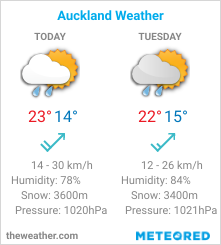
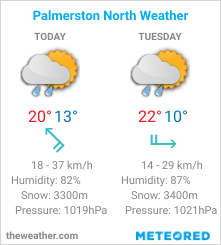
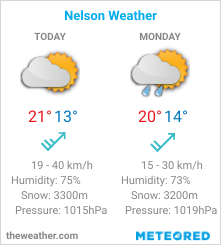

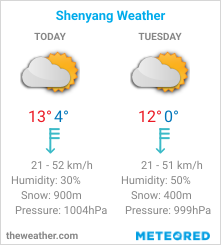
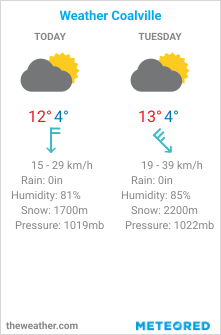
No comments:
Post a Comment
How did you like the post, leave a comment. I would appreciate hearing from you all. Best wishes from JC's Naval, Maritime and Military News